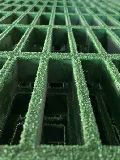loading...
- No. 9, Xingyuan South Street, Dongwaihuan Road, Zaoqiang County, Hengshui, Hebei, China
- admin@zjcomposites.com
- +86 15097380338
- Welcome to visit our website!
frp railing
The Importance of FRP Railing in Modern Construction
In today's construction industry, safety and durability are paramount considerations. One innovative solution that has gained popularity in recent years is the use of Fiber Reinforced Polymer (FRP) railings. These railings are rapidly becoming the choice for builders and architects alike, thanks to their unique properties and advantages.
FRP railings are composed of a combination of fiberglass and resin, which provides exceptional strength and durability. Unlike traditional materials such as wood, steel, or aluminum, FRP railings are resistant to corrosion, fading, and weathering. This makes them particularly suitable for outdoor environments where exposure to the elements can lead to deterioration over time. The long lifespan of FRP railings ensures that they maintain their structural integrity and aesthetic appeal for many years, making them a cost-effective solution in the long run.
The Importance of FRP Railing in Modern Construction
Another advantage of FRP railings is their flexibility in design. They can be molded into various shapes and colors, allowing for limitless possibilities in architectural aesthetics. This adaptability means that FRP railings can complement the design of any project, whether it be commercial, residential, or industrial. Architects can create visually appealing designs while still adhering to safety regulations and standards.
frp railing

Moreover, FRP railings are non-conductive, making them an excellent choice for installations in environments where electrical safety is a concern. They do not rust, rot, or splinter, which further enhances their safety features. This is particularly important in public spaces where safety is a top priority. The smooth surface of FRP railings also minimizes the risk of injury, making them suitable for high-traffic areas.
In terms of maintenance, FRP railings offer significant advantages over traditional materials. They do not require regular painting or treatment to maintain their appearance, resulting in reduced maintenance costs over time. A simple cleaning with mild soap and water is often sufficient to keep them looking new, allowing property owners to focus on other important aspects of their maintenance budgets.
Sustainability is another key consideration in modern construction practices. FRP railings can be produced using recycled materials, making them an environmentally friendly choice. The reduced need for replacement and maintenance further lessens their environmental impact, aligning with the increasing demand for sustainable building materials.
In conclusion, FRP railings represent a significant advancement in construction materials. Their combination of strength, durability, lightweight design, and aesthetic versatility makes them an ideal choice for a wide range of applications. As the construction industry continues to evolve, the adoption of innovative materials like FRP railings will play a crucial role in enhancing safety, sustainability, and efficiency in building projects. As we move forward, it is clear that FRP railings are not just a trend; they are a necessary component of modern construction solutions.
-
The Rise of FRP Profiles: Strong, Lightweight, and Built to LastNewsJul.14,2025
-
SMC Panel Tanks: A Modern Water Storage Solution for All EnvironmentsNewsJul.14,2025
-
GRP Grating: A Modern Solution for Safe and Durable Access SystemsNewsJul.14,2025
-
Galvanized Steel Water Tanks: Durable, Reliable, and Ready for UseNewsJul.14,2025
-
FRP Mini Mesh Grating: The Safer, Smarter Flooring SolutionNewsJul.14,2025
-
Exploring FRP Vessels: Durable Solutions for Modern Fluid HandlingNewsJul.14,2025
-
GRP Structures: The Future of Lightweight, High-Performance EngineeringNewsJun.20,2025
